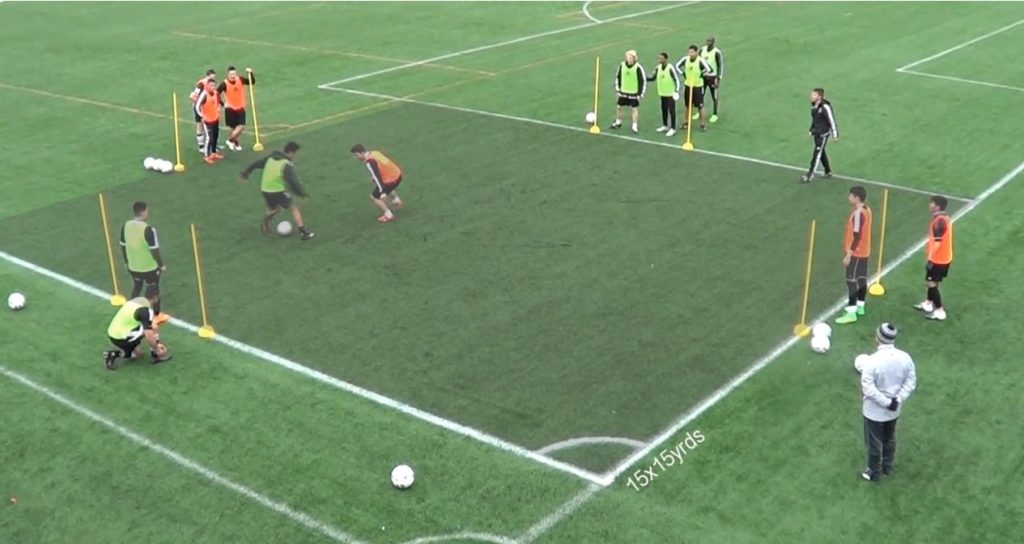Training and practice are great, but what if you could train in realistic situations?
You see, gaining knowledge on how to do certain things in your favorite sport is only half of the work.
Applying that knowledge is how you know you’ve truly learned that skill or tactic.
The same is true for soccer, and this is why coaches conduct scrimmages.
Scrimmages also add a recreational angle to soccer practice and can foster team building and bonding efforts.
Here, I will tell you why scrimmages are important in soccer and how they help coaches prepare for games.
What is a Scrimmage in Soccer?

A scrimmage in soccer is basically live practice. It is done to replicate a real game scenario.
After the coaches build up players’ physiques and train the players’ skills, the time will come for them to train specifically to face an opponent. Studying is one of the ways this is done. However, head knowledge doesn’t completely cut it.
This is where scrimmages come in, as the coach can set up his players into different teams – one, to try out his tactics, and another to mirror the team who they’re about to face.
Scrimmages are also set up to give players a real-time experience of the roles or positions they will be required to play in the next soccer game.
Coaches use this to polish players and to determine a player’s fit for various positions. There is no special pressure to win in scrimmage, so players can focus more on learning.
How to Set Up a Soccer Scrimmage?
There are three ways to set up a soccer scrimmage.
7×7 Scrimmage
In a 7×7 scrimmage, the coach reduces the number of players to seven-a-side. This ensures that players can put in enough effort to make the tactic work.
The drill uses up a smaller space, usually 60×40 yards, and two goals that can be professional standard or slightly smaller.
Full Game Scrimmage
This is basically mimicking a real game scenario on a practice field.
The main idea is to test players for stamina and endurance because there will be no substitutions.
This one helps players learn the most. It is also the most draining, which means it shouldn’t be done unless necessary.
Tournament Scrimmage
A squad is broken down into five-a-side or four-a-side teams for a round-robin tournament to determine a winner.
The main idea of this type of scrimmage is to foster player bonding on the pitch.
What is the Point of a Scrimmage Game?
In the 2023/24 English Premier League season, Arsenal did not lose to Manchester City.
Arsenal, who knew their strengths and history with Manchester City, chose to absorb pressure in the two matches they played against Manchester City. This resulted in two big results for Arsenal, who used to be Manchester City’s playthings.
The lesson here is that Manchester City didn’t know Arsenal would try to sit back. In their scrimmage, they most likely planned for Arsenal’s usual rapid attack.
Their scrimmage, however, helped the Manchester City players to hone their tactics better, which prevented a disgraceful loss to Arsenal.
Scrimmage is not a foolproof way to beat soccer opponents, but for coaches, scrimmages help discover players who can play multiple roles in the case of an emergency substitution or a brand new matchday tactic that’s being cooked.
The exercise also helps players understand their capabilities well.
Why is It Called a Scrimmage?
The origins of the word “scrimmage” make me laugh.
The word came from “skirmish,” which means “confused struggle”.
But soccer scrimmages aren’t confused struggles. They are deliberate struggles.
You see, since scrimmages are meant to mimic real-game scenarios, players are allowed to be chaotic. In this chaos, the order is found, and it is this order that they will take to the match against their opponents.
Whether in a 7×7 or a full-game scrimmage, the coach wants his players to make all the mistakes they can before they take to the soccer field against their opponents.
They practice set-piece routines, defensive high lines, three-pronged attacks (an attack from both flanks and the center happening at the same time), and new team formations.
They are allowed to quarrel with each other until they understand each other and can work together.
Final Thoughts
If you’re learning how to handle a team, now you have all the information you need to carry out a successful scrimmage.
If you’re a soccer newbie who watched a practice session where the players faced each other, this article should provide some context to what you witnessed.
I must reiterate that scrimmages are not the be-all and end-all of soccer training. They are one of many important methods to condition players for a match.
Soccer’s evolution could see scrimmage take new forms in the future. You can count on me to educate you about the changes when they happen!

